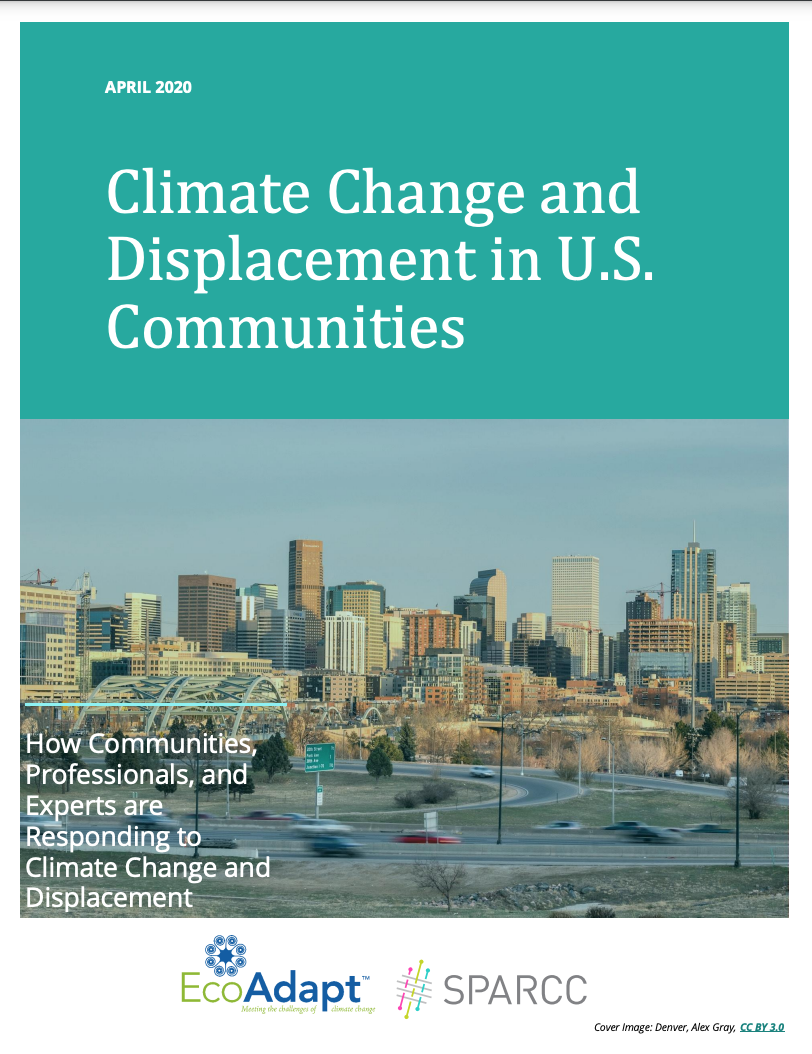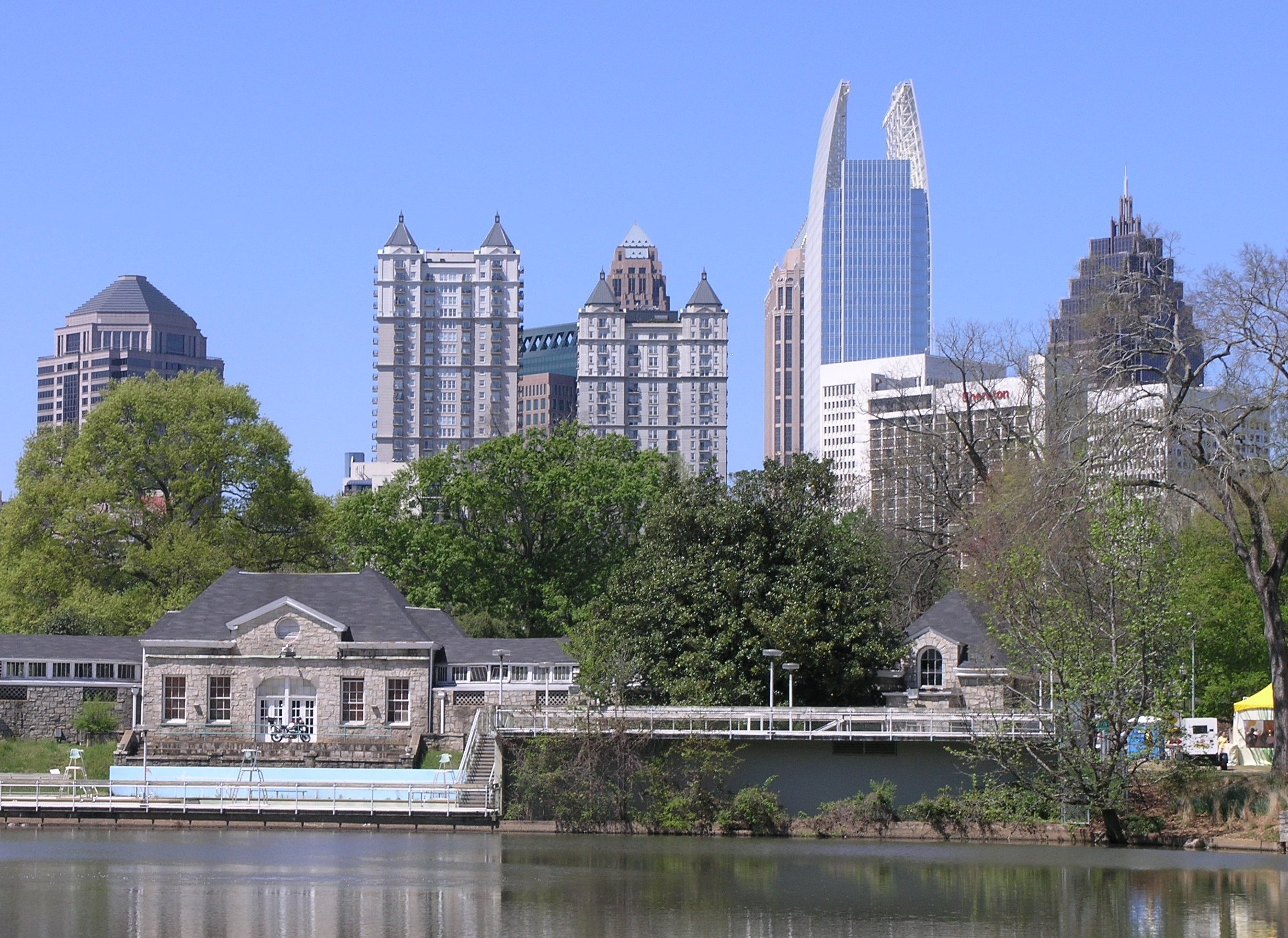Climate Change and Displacement in U.S. Communities
Climate change poses significant threats to the physical, cultural, spiritual, social, and economic displacement of communities around the world. EcoAdapt partnered with the Strong, Prosperous, and Resilient Communities Challenge to determine if and how people working to address displacement pressures are considering climate change.
Use this guidebook to explore the survey results and learn: 1) to what degree anti-displacement practitioners are thinking about climate change in their work, 2) about emerging practices and policies that aim to reduce climate risks and displacement pressures, 3) about the needs, opportunities, and barriers in reducing those pressures, and 4) what urban communities are doing to address these challenges.
Key Findings
- Eighty-eight percent of respondents
 indicate that their community is experiencing moderate to significant development or redevelopment pressure.
indicate that their community is experiencing moderate to significant development or redevelopment pressure.
- Ninety-one percent of participants agree that climate change is having or is likely to have a significant effect on their communities.
- Day-to-day issues such as the availability of affordable housing, fair housing opportunities, rising property values, displacement risks, and cost of living rank highly among all respondents, followed by climate change stressors and impacts—storms and extreme weather events, extreme heat events, flooding, drought, sea level rise, and wildfire.
- Of the climate issues ranked among those about which respondents are very concerned are storms and extreme weather events, extreme heat events, flooding, increasing air temperatures, sea level rise, drought, and wildfire. Among respondents from states engaged in the Strong, Prosperous, and Resilient Communities Challenge, wildfire only registers as a major issue of concern for western states such as Colorado and California. Flooding ranks as the most frequently expressed concern for respondents from Tennessee, while extreme heat events and storms are the most frequently expressed concerns by respondents in Georgia and Illinois.
- Respondents most frequently use best practices, lessons learned from other professionals, knowledge of community members and peers, and environmental, climate, and/or economic justice and equity information to inform their work.
- Sixty-four percent of survey respondents report adjusting their activities in some way to address climate change, and are primarily motivated by concerns about climate justice and equity, perceived threats from climate-related events, and observed changes in their community.
- Key barriers to addressing displacement in a changing climate include lack of funding, insufficient staff resources and capacity, and current more pressing issues. Among the lowest perceived barriers are a lack of clarity about which adaptation options are available to decision makers and lack of specific climate data for communities.
- Many of the anti-displacement activities expressed by respondents that may be vulnerable to the effects of climate change or may increase community vulnerability are related to maintaining the status quo as baseline problems contribute to community instability. Limitations in resources, economic and job opportunities, and access to critical services also amplify individual and community vulnerability to climate change. Maladaptive policies or practices also make communities more vulnerable to climate change as they may increase risk to the impacts of climate change, increase greenhouse gas emissions that cause climate change, or otherwise negatively affect people’s wellbeing.
- Participants noted several opportunities to increase community resilience to climate change, such as integrating climate change into the design and building of new developments, investing in community revitalization and stabilization, improving and maintaining access to services during extreme events, stronger protections to promote tenant and housing stability, increased public education and engagement, investment in the workforce, and technical and financial assistance to improve climate resilience in vulnerable communities. Examples are provided from across the United States and full case studies are presented on projects from Enterprise Community Partners, Bay Area Health Inequities Initiative, the Greenlining Institute, the Partnership for Southern Equity, and the Southface Institute.
Featured Case Studies
Suggested Citation
Gregg RM, Braddock KN. 2020. Climate Change and Displacement in U.S. Communities. EcoAdapt, Bainbridge Island, WA.
Acknowledgements
Special thanks to:
- The research team—Anna Cash, Naomi Cytron, Nicholas Depsky, Shazia Manji, and Marissa Ramirez—for input and guidance on the survey
- EcoAdapt staff and Nick Collins for formatting this paper
- The numerous individuals who contributed materials and participated in interviews and surveys for this project
This report was funded by the Strong, Prosperous, and Resilient Communities Challenge (SPARCC); the views contained herein are those of the authors and do not necessarily reflect those of SPARCC.


